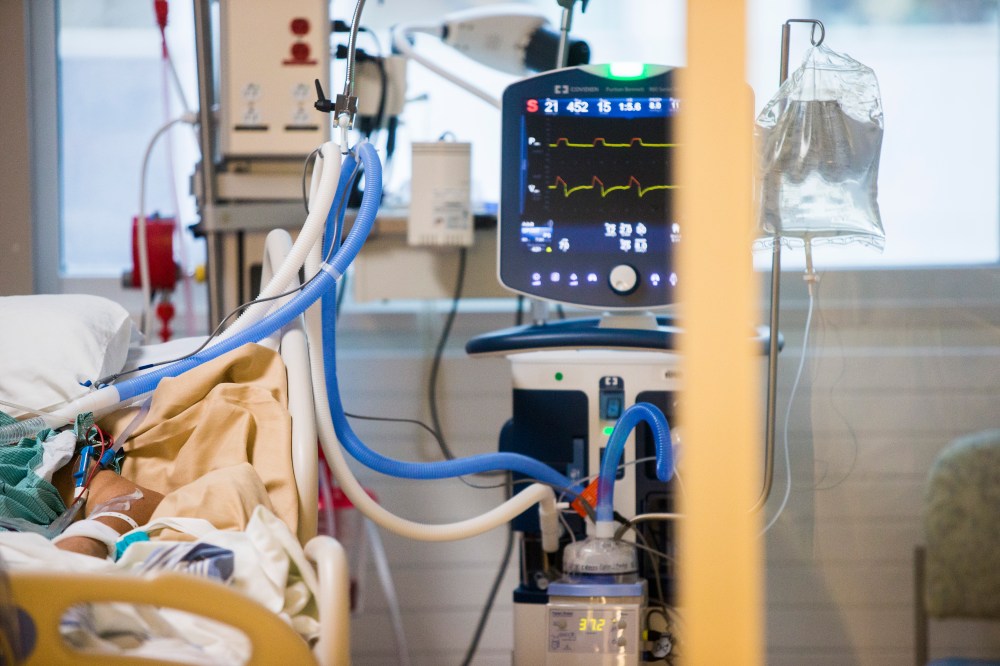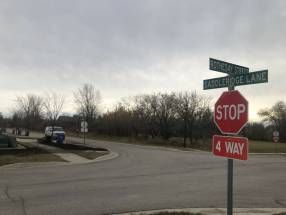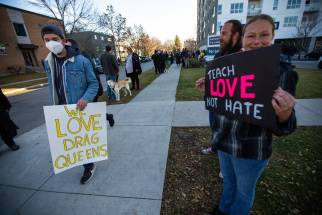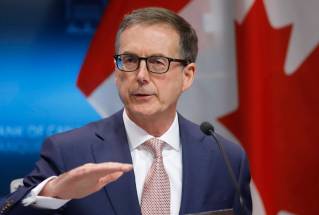Province cuts COVID corners amid ‘critical’ staff shortages Return-to-work guidelines loosened for health-care employees with ‘mild’ symptoms; doctors fear increase in transmission
Read this article for free:
or
Already have an account? Log in here »
To continue reading, please subscribe:
Monthly Digital Subscription
$19 $0 for the first 4 weeks*
- Enjoy unlimited reading on winnipegfreepress.com
- Read the E-Edition, our digital replica newspaper
- Access News Break, our award-winning app
- Play interactive puzzles
*No charge for 4 weeks then billed as $19 every four weeks (new subscribers and qualified returning subscribers only). Cancel anytime.
Read unlimited articles for free today:
or
Already have an account? Log in here »
Hey there, time traveller!
This article was published 30/10/2022 (689 days ago), so information in it may no longer be current.
Manitoba is loosening its COVID-19 return-to-work guidance for health-care employees — eliminating testing requirements in some cases — raising concerns staff and patients are being put at greater risk of infection.
The province is allowing workers with mild symptoms to go back to work sooner or without a negative test result, while bracing for a winter wave of viruses that threatens to exacerbate severe staff shortages.
Two Winnipeg critical-care physicians told the Free Press they’re concerned the policy changes, which went into effect Monday, could lead to increased transmission if staff are still contagious when they return.
“This will possibly increase it, but spread is common and hard to trace, so the impact won’t be known,” said one of the doctors, who asked to remain anonymous. “The risk of loosening these guidelines is there will be some people who are still contagious. We are, literally, so short-staffed it is critical. The risk has to be balanced.”
“The risk of loosening these guidelines is there will be some people who are still contagious. We are, literally, so short-staffed it is critical. The risk has to be balanced.”–Doctor
Widespread exposure to the Omicron variant and vaccines have resulted in “significant” immunity, according to Shared Health.
Manitoba shifted toward self-screening for staff when the guidance was relaxed during the Omicron wave last December.
The latest changes are a sign the province is expecting an uptick in staff absences and looking for ways to help the system cope under further strain.
“The province has been playing it too loose since eliminating mask mandates and never developing measurable indoor air-quality guidelines,” the doctor said.
Dr. Doug Eyolfson, who works in the emergency room at Grace Hospital, challenged the province to provide data showing it is safe to return to work within the revised timelines.
“I don’t know what data they have to support that,” the former Liberal member of Parliament said. “I do have a problem with people who are symptomatic not testing before going to work.
“I think there’s been too much relaxation of these guidelines over the last several months. The pandemic is still on.”
MIKAELA MACKENZIE / WINNIPEG FREE PRESS FILES Dr. Doug Eyolfson, who works in the emergency room at Grace Hospital, challenged the province to provide data showing it is safe to return to work within the revised timelines.
Shared Health, which oversees Manitoba’s health-care system, explained the changes in an Oct. 27 operational update published on its website.
Health-care workers who develop new COVID-19 symptoms within four months of a confirmed case are no longer required to test for the virus.
They can return if their symptoms are “mild and improving,” as long as any lingering effects don’t stop them from wearing personal protective equipment and no fever has been present for 24 hours without the use of medication.
“Health-care workers must feel well enough for work (and) declare themselves ‘fit for work,’” the document states.
Immunocompromised health-care workers must continue to test.
Shared Health said there is a “very low reported incidence” of repeat infection in non-immunocompromised people who’ve had the virus in the previous four months.
Workers who develop symptoms without a confirmed case in the previous four months must perform a rapid antigen test, but they are no longer required to take a second test if the first result is negative and their symptoms do not worsen.
They are allowed to return to work under the same conditions, including mild and improving symptoms.
Staff who have a positive rapid test result may now return to work on the fifth day after the onset of symptoms or the positive test.
They will not require a negative test result prior to going back to work.
“These measures are anticipated to allow some staff to return to work sooner, or to continue working with minor symptoms, maintaining vital services for Manitobans in need of health care.”–Shared Health spokesman
“The assumption is that as long as you’re feeling better, you’re very unlikely to transmit infection to patients,” said the doctor who asked not to be named. “However, many people still test as positive at Day 5 — even Day 10 — so increased transmission to patients is more likely.
“They are trying to balance the risk of having no staff to care for patients versus having staff possibly be slightly infectious.”
Under previous guidance in April, employees who tested positive were required to take a rapid test on Day 7. If negative, they were allowed to return to work the next day.
If the test was positive, the worker was not cleared to return before Day 11, as long as their symptoms were mild and improving.
Employees who are asymptomatic following household exposure no longer have to test themselves before returning to work.
“Updated return-to-work guidance is primarily motivated by widespread staffing challenges being experienced across the health system as well as the risk that staff illness may pose to the continued delivery of vital health services,” a Shared Health spokesman wrote in an email. “This revised approach aligns with public health guidance while maintaining key measures used throughout the pandemic to prevent transmission of respiratory viruses, including COVID-19.
“These measures are anticipated to allow some staff to return to work sooner, or to continue working with minor symptoms, maintaining vital services for Manitobans in need of health care.”
“They are trying to balance the risk of having no staff to care for patients versus having staff possibly be slightly infectious.”–Doctor
Medical-grade face masks are still mandatory for hospital visitors.
The spokesman said sick time for staff in Winnipeg — for COVID and non-COVID reasons — was equivalent to 6.73 per cent of all hours worked in the two-week pay period ending Oct. 14.
The rate was 5.91 per cent for the same period last year. The pre-pandemic rate in 2019 was 5.38 per cent.
About 53,500 hours per week were lost to sick time, an increase of about 4,200 hours per week, or 8.5 per cent, from the same time last year.
“That is equivalent to needing to fill an additional 525 eight-hour shifts lost due to illness (recognizing not all health-care shifts are eight hours in length),” the spokesman wrote in an email.
The most recent two-week total is 33.3 per cent higher than the same pay cycle in 2019, when about 40,200 staff hours were lost per week.
Since October 2021, there has been only one pay period where the sick rate has dropped below six per cent.

Describing it as an “incredibly risky” approach, Liberal Leader Dougald Lamont said the updated guidance is the opposite of what must be done to reduce the spread of the virus.
Staff will be expected to show up when exhausted or still recovering, he said.
“This is not protecting the most vulnerable. This is not protecting the health-care system,” said Lamont.
Recent federal wastewater data for Winnipeg shows an increased presence of the virus.
Manitoba Health reported 100 hospital admissions, including 16 in intensive care, for COVID-19 as of Oct. 26, down from 103 the previous week.
chris.kitching@freepress.mb.ca
Twitter: @chriskitching
Chris Kitching
Reporter
As a general assignment reporter, Chris covers a little bit of everything for the Free Press.
Our newsroom depends on a growing audience of readers to power our journalism. If you are not a paid reader, please consider becoming a subscriber.
Our newsroom depends on its audience of readers to power our journalism. Thank you for your support.
History
Updated on Tuesday, November 1, 2022 8:37 AM CDT: Add related posts.
Updated on Thursday, November 3, 2022 7:00 PM CDT: BG image updated















